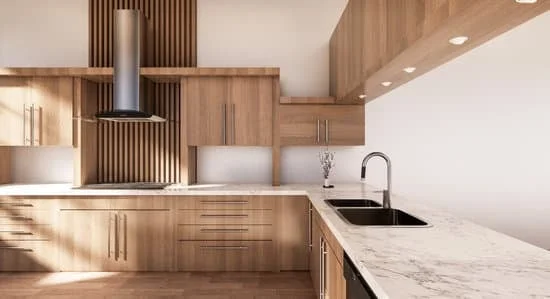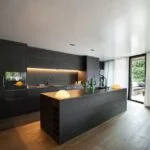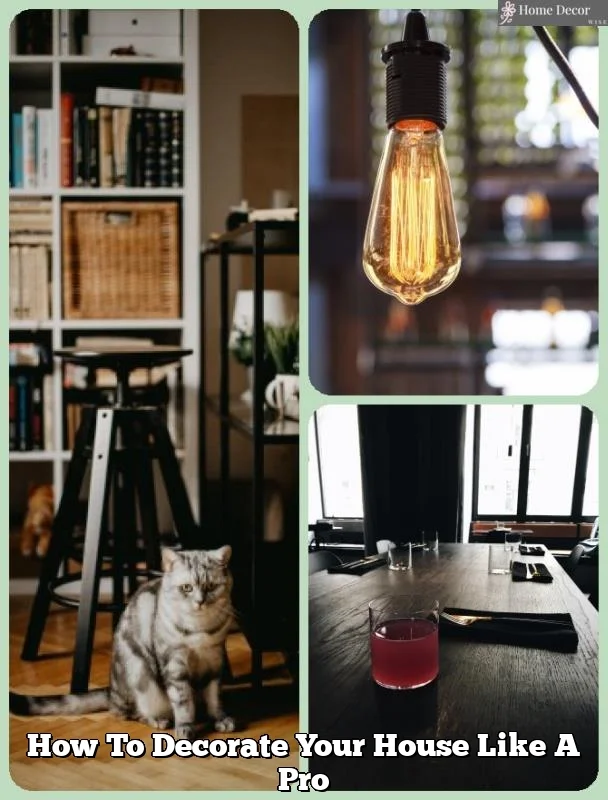Are you wondering how to decorate a 1910 home? The architecture and design of a 1910 home come with unique features and historical importance, making it a significant element in modern interior design trends. In this article, we will explore the history and architecture of the 1910 home, identify its traditional features, and provide tips for embracing vintage elegance to enhance its historical charm.
The year 1910 marked a time of transition in architectural and interior design styles. The homes built during this era often feature original woodwork, built-in cabinetry, decorative hardware, and other distinctive elements that reflect the craftsmanship and attention to detail of the period. Understanding the significance of these traditional features is essential in effectively decorating a 1910 home to create an authentic and harmonious living space.
As we delve into the world of 1910 home decor, we will discuss techniques for reclaiming original elements, exploring period-appropriate color palettes and wallpaper patterns, seamlessly blending modern conveniences with vintage style, selecting furniture and textiles that complement the era, as well as adding final touches with vintage-inspired accents.
Whether you own a 1910 home or simply admire its timeless appeal, this article will provide valuable insights on how to decorate a space that pays homage to its rich history while reflecting your personal style.
Assessing the Traditional Features
When decorating a 1910 home, it is important to first assess and identify the traditional features that make it unique. These distinct characteristics often include original woodwork, built-in cabinetry, and decorative hardware that reflect the craftsmanship and design of the era. Here are some tips on how to highlight these traditional features while decorating a 1910 home:
- Original Woodwork: One of the most prevalent features in a 1910 home is the original woodwork, which can include intricately carved moldings, doors, and trim. To showcase this craftsmanship, consider refinishing or restoring the woodwork to bring out its natural beauty. Additionally, you can complement the woodwork with vintage-inspired furniture pieces made from similar rich woods, such as oak or mahogany.
- Built-in Cabinetry: Many 1910 homes boast built-in cabinetry that adds character and charm to the interior spaces. To accentuate these architectural elements, use them as focal points by displaying antique china or glassware within the cabinets. You can also highlight their presence by selecting period-appropriate hardware or fixtures that enhance their overall aesthetic appeal.
- Decorative Hardware: The decorative hardware in a 1910 home, including doorknobs, hinges, and latches, often reflects the ornate style of the time period. When decorating, try to preserve and restore these vintage hardware pieces to maintain their authenticity. Consider polishing or refinishing them to revive their original luster and create a cohesive look throughout the home.
By paying attention to these traditional features and incorporating them into your decor strategy, you can honor the historical significance of a 1910 home while creating a timeless and elegant living space.
Embracing Vintage Elegance
When decorating a 1910 home, incorporating antique furniture, lighting, and decor is essential to enhancing the historical charm of the space. One key tip for embracing vintage elegance in a 1910 home is to focus on authenticity. Seek out original pieces from the early 20th century, such as wooden chests, sideboards, and dining tables. These items not only add character to the home but also serve as functional and practical additions to your living space.
In addition to furniture, antique lighting can have a significant impact on the overall ambiance of a 1910 home. Consider adding elegant chandeliers, sconces, or lanterns that reflect the style of the era. These fixtures can be found in various materials such as brass, iron, or glass and can become focal points in your living room, dining area, or hallway.
Furthermore, incorporating vintage decor elements can help tie together the historical charm of a 1910 home. Look for ornate mirrors with intricate frames that reflect the design aesthetic of the time period. Accessorize with antique vases, china sets, and other decorative items that reflect the craftsmanship and style of the early 1900s. By embracing these vintage pieces throughout your home, you can create an authentic and timeless look while paying homage to its historical significance.
Color Palette and Wallpaper
When it comes to decorating a 1910 home, selecting the right color palette and wallpaper patterns can make a significant impact on the overall aesthetic. By choosing period-appropriate paint colors and wallpapers, you can create a cohesive and authentic look that enhances the historical charm of the home.
Period-Appropriate Paint Colors
One of the key elements of decorating a 1910 home is selecting paint colors that are in line with the era. Consider hues such as olive green, burgundy, navy blue, and mustard yellow for an authentic touch. These colors were popular during the early 20th century and can help to recreate the ambiance of that time period. Additionally, incorporating rich, dark colors for trim work can help accentuate the architectural details of a 1910 home.
Wallpaper Patterns
In addition to paint colors, wallpaper patterns play a crucial role in capturing the essence of a 1910 home. Look for wallpapers with intricate floral motifs, damask designs, or art nouveau patterns. These styles were prevalent during the early 1900s and can bring a sense of authenticity to the decor. When selecting wallpaper for different rooms in a 1910 home, consider using different patterns to add visual interest while still maintaining cohesiveness throughout the space.
Cohesive and Authentic Look
By carefully choosing period-appropriate paint colors and wallpaper patterns, you can achieve a cohesive and authentic look in a 1910 home. This attention to detail helps to honor the historical significance of the house while creating an inviting and aesthetically pleasing environment for modern living. Whether opting for bold hues or delicate patterns, incorporating these elements will undoubtedly elevate the overall decor of a 1910 home.
Reclaiming Original Elements
Reclaiming the historical charm of a 1910 home involves restoring and preserving its original elements. From hardwood floors to stained glass windows and intricate moldings, these features contribute to the authenticity and character of a 1910 home. Here are some techniques for ensuring that these original elements are properly maintained and showcased in your home.
Restoring Hardwood Floors
One of the most iconic features of a 1910 home is its hardwood floors. To restore these original floors, start by removing any carpeting or other coverings to assess their condition.
Depending on the level of wear and tear, you may need to sand down the floors to remove scratches and stains before applying a fresh coat of stain and sealant. Hiring a professional floor restoration company can ensure that this process is done correctly, preserving the beauty of the original hardwood.
Preserving Stained Glass Windows
Stained glass windows were a common architectural feature in 1910 homes, adding elegance and color to interior spaces. To preserve these unique windows, it’s important to inspect them for any damaged or missing pieces of glass. Consult with a stained glass specialist who can carefully repair or replace any damaged sections while maintaining the historical integrity of the window design.
Maintaining Intricate Moldings
The intricate moldings found in 1910 homes were handcrafted with attention to detail, adding decorative flair to every room. To maintain these moldings, regular cleaning and maintenance are essential. Use a gentle cleanser and soft cloth to remove dust and dirt from the surfaces while taking care not to damage the delicate designs. For any areas with cracks or damage, consult with a professional carpenter who specializes in historic homes for repairs that uphold the original craftsmanship.
By focusing on restoring and preserving original features such as hardwood floors, stained glass windows, and intricate moldings, homeowners can honor the heritage of their 1910 home while creating a timeless living space that blends historical charm with modern comfort.
Mixing Old and New
When it comes to decorating a 1910 home, finding the balance between preserving its historical charm and integrating modern conveniences is key. Here are some tips on how to seamlessly blend old and new elements in a 1910 home:
- Embrace technology: While it’s important to maintain the vintage feel of a 1910 home, there’s no reason why you can’t incorporate modern technology. Consider discreetly hiding modern amenities such as smart thermostats, speakers, and other gadgets within vintage-style cabinets or behind decorative screens.
- Choose contemporary furnishings: Instead of filling your 1910 home with strictly antique pieces, consider incorporating modern furniture with clean lines and simple shapes. This can create an interesting contrast with the traditional architecture of the home while still maintaining a cohesive look.
- Update lighting fixtures: Modern lighting fixtures can help brighten up a space and provide much-needed illumination in older homes. Consider adding sleek, contemporary light fixtures that complement the vintage style of your 1910 home while also providing ample light for everyday tasks.
By carefully blending old and new elements, you can create a harmonious and stylish living space that respects the history of your 1910 home while also meeting the needs of modern-day living.
Furniture and Textiles
When decorating a 1910 home, it is essential to select the right pieces of furniture and fabrics that complement the era and style of the house. The furniture in a 1910 home should reflect the design aesthetics of the time while also providing comfort and functionality for modern living. Look for pieces that have a classic and timeless feel, with details such as intricate wood carvings, claw feet, and turned legs.
When it comes to selecting textiles for a 1910 home, consider using rich and luxurious fabrics such as velvet, brocade, and silk. These textiles were popular during the early 20th century and can add an elegant touch to the interior decor. For upholstery, look for furniture with traditional upholstery techniques such as tufting and channel back detailing.
In terms of color schemes for furniture and textiles in a 1910 home, consider using rich, deep hues such as burgundy, forest green, navy blue, and gold tones. These colors were commonly used during this time period and can help create an authentic vintage feel in your home. Additionally, incorporating antique rugs or tapestries can further enhance the period-appropriate aesthetic of your space.
It is important to strike a balance between preserving the historical integrity of the home while also infusing it with personal style. Mixing antique furniture with modern accents can create a unique and eclectic look that honors the history of the house while still feeling current and relevant. By paying attention to detail when selecting furniture and textiles for a 1910 home, you can achieve a cohesive and authentic look that celebrates its unique charm.
| Furniture | Textiles |
|---|---|
| Intricate wood carvings | Vintage fabrics like velvet or brocade |
| Claw feet & turned legs | Tufting & channel back detail on upholstery |
| Rich deep hues (burgundy) | Antique rugs & tapestries |
Final Touches
As you put the finishing touches on decorating your 1910 home, it’s important to pay attention to vintage-inspired accents that will truly complete the overall look of your space. Adding artwork, rugs, and decorative accessories can add character and personality to your home while staying true to the historical charm of the era.
Vintage-inspired artwork, from classic oil paintings to art deco prints, can bring a sense of nostalgia and sophistication to your walls. Look for pieces that reflect the style and themes popular in the early 20th century to create an authentic atmosphere in your home.
When it comes to rugs, consider selecting patterns and designs commonly found in 1910 homes, such as oriental rugs or traditional floral motifs. These types of rugs not only add warmth and comfort to your space but also serve as a nod to the time period in which your home was built.
Additionally, don’t overlook the impact of decorative accessories such as antique vases, art deco figurines, or vintage-inspired clocks. These small details can tie together the overall aesthetic of your home while showcasing your personal taste and style.
In conclusion, adding vintage-inspired accents like artwork, rugs, and decorative accessories is the final step in achieving a cohesive and authentic look for your 1910 home. By carefully selecting pieces that reflect the time period and style of your home, you can create a space that pays homage to its historical significance while still feeling relevant and inviting for modern living. Embracing these final touches will undoubtedly enhance the overall ambiance of your 1910 home decor.
Frequently Asked Questions
What Style Is My 1910 House?
Your 1910 house is likely of the Colonial Revival style, which was very popular during that time. This style often featured symmetrical facade, simple and clean lines, and traditional details.
What Design Period Was 1910?
The design period of 1910 was characterized by a mix of architectural styles, including Victorian, Arts and Crafts, and Colonial Revival. This period was a transition from the ornate details of the Victorian era to the more simplified designs of the early 20th century.
How to Decorate an Old Fashioned House?
Decorating an old-fashioned house involves embracing its historical charm while still adding modern touches. Consider using vintage furniture, incorporating traditional patterns and fabrics, and paying attention to architectural details like moldings and trim to enhance the period feel of your home.

I’m thrilled to be your companion on this exciting journey through the world of home decor and design. With a passion for turning houses into homes and a keen eye for the finer details, I’m here to help you transform your living spaces into beautiful, functional, and meaningful havens.





